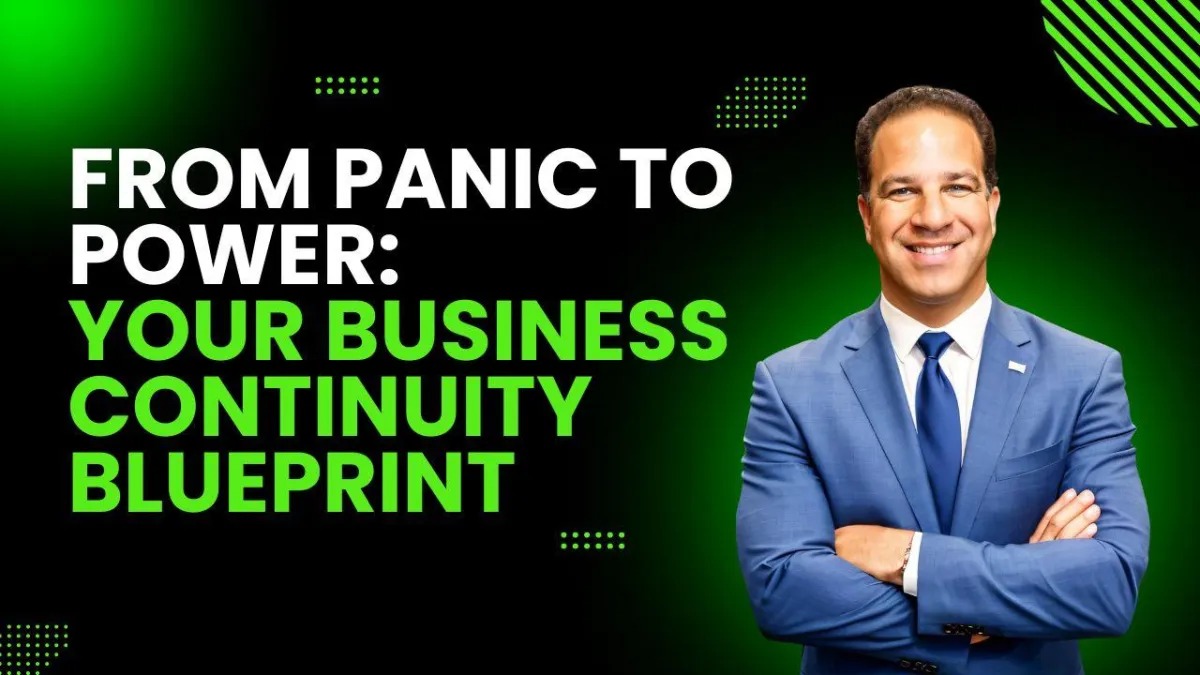
From Panic to Power: Build Your Business Continuity Blueprint

The entrepreneurial journey is exhilarating, brimming with possibilities and brimming with pitfalls. One such pitfall, often underestimated, is business disruption. A cyberattack throws your entire network into chaos. A flood devastates your local community, rendering your storefront inaccessible. An economic downturn squeezes consumer spending. These unforeseen events can cripple even the most well-intentioned ventures. But what if you could transform from being merely reactive to disruptions to becoming a responsive and adaptable business? This, my fellow risk-takers, is the power of business continuity planning.
Imagine this scenario: you're a thriving e-commerce boutique. Suddenly, a major cloud service provider outage disrupts your website, grinding sales to a halt. Panic might ensue. But what if you had implemented a business continuity plan? This plan, meticulously crafted after a thorough risk assessment, would have identified this very threat. Your team, trained and prepared, would seamlessly switch to a secondary platform, minimizing downtime and lost sales. Customers receive updates via pre-established communication channels, and while there might be a temporary blip, your business continues to operate. This is the essence of business continuity: ensuring your company can adapt and navigate disruptions with minimal impact.
The foundation of a robust business continuity plan is a comprehensive risk assessment. This isn't a simple checklist; it's a deep dive into your company's vulnerabilities. Think of your business as a complex organism. Who are the vital organs keeping it alive? Your suppliers? Your key customers? Your data? By meticulously dissecting these interdependencies, you identify potential threats and how they might cascade through your organization. This empowers you to prioritize risks and allocate resources strategically, fortifying the most susceptible areas.
Armed with this risk assessment, you can craft a dynamic business continuity plan, a detailed playbook for navigating disruptions with agility. Here's where creativity comes into play. Forget a one-size-fits-all approach. Instead, envision a flexible framework that can adapt to various scenarios.
Here are some key elements to consider when building your responsive business continuity plan:
Scenario Planning: Don't just plan for the most likely threats, consider a wider range of possibilities. This encourages creative solutions and fosters a culture of adaptability within your team.
Redundancy is Your Friend: From data backups to alternate suppliers, establish redundancies for critical systems and processes. This minimizes single points of failure and ensures continuity during disruptions.
Embrace Flexibility: Remote work capabilities, cloud-based solutions, and cross-trained employees all contribute to a more flexible business model, capable of adapting to changing circumstances.
Communication is Paramount: Establish clear communication protocols for internal and external stakeholders. Regularly test these protocols through drills and simulations to ensure seamless information flow during disruptions.
Remember, business continuity planning isn't a one-time event. As your business evolves, so too should your plan. Regularly review and update your plan to reflect changes in your operations, the industry landscape, and the evolving threat environment.
Looking beyond traditional safeguards, consider incorporating innovative solutions. Blockchain technology, for instance, offers tamper-proof data storage solutions, bolstering your cyber resilience.
Don't forget the potential of 831(b) captive insurance! This innovative approach allows businesses to form their own micro-captive insurance company, essentially self-insuring against specific risks like business interruptions. There are several advantages to this approach. You can tailor coverage to your unique operations, potentially achieving more stable rates and potentially faster claims handling due to the close alignment between the insurer and the insured.
Finally, fostering a culture of preparedness is paramount. Empower your employees to be active participants in the business continuity planning process. Regular training sessions and tabletop exercises not only equip them with the knowledge to act effectively during disruptions but also instill a sense of ownership and confidence within your team.
By adopting this holistic approach to business continuity planning, you transform your company from a fragile house of cards into a sturdy, adaptable structure. Disruptions are inevitable, but with a well-crafted plan, a prepared team, and a keen eye for innovative solutions like 831(b) captives, you can navigate them with grace and emerge stronger on the other side. So, take a proactive stance, embrace adaptability, and build a business continuity plan that empowers your venture to thrive in the face of the unexpected. After all, a prepared entrepreneur is a powerful entrepreneur.
Don't wait for disaster to strike! Secure your business continuity and empower it to thrive. Schedule a free consultation to discuss how our team can help you craft a winning plan: [Click here].
Remember, a prepared business is a powerful business.
Kenner French, is a former small business contributor at Forbes.com, author of three books, an executive at AI-focused VastSolutionsGroup.com and VastHoldingsGroup.com, a keynote speaker, and a Dave Matthews Band fan!
